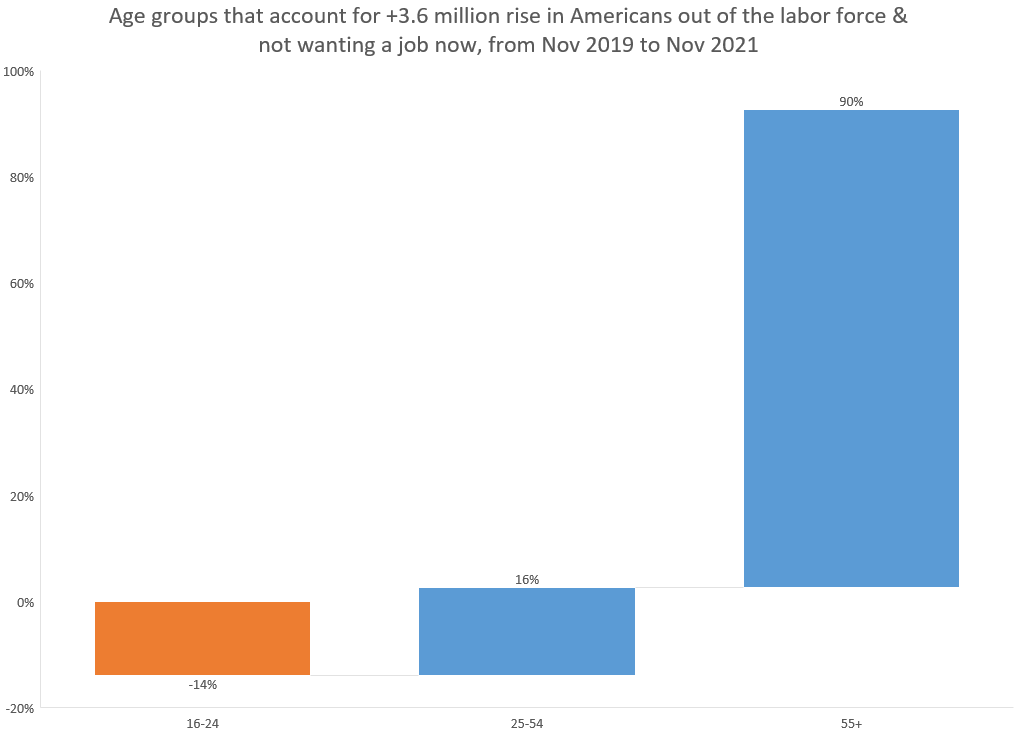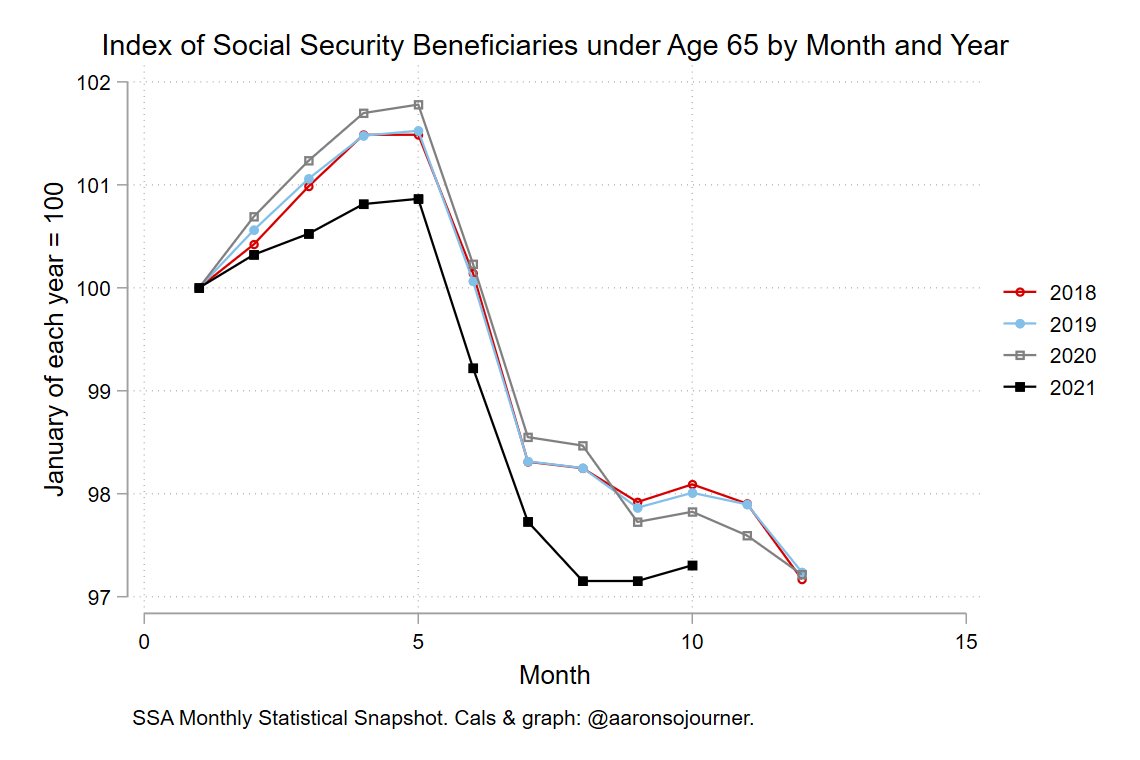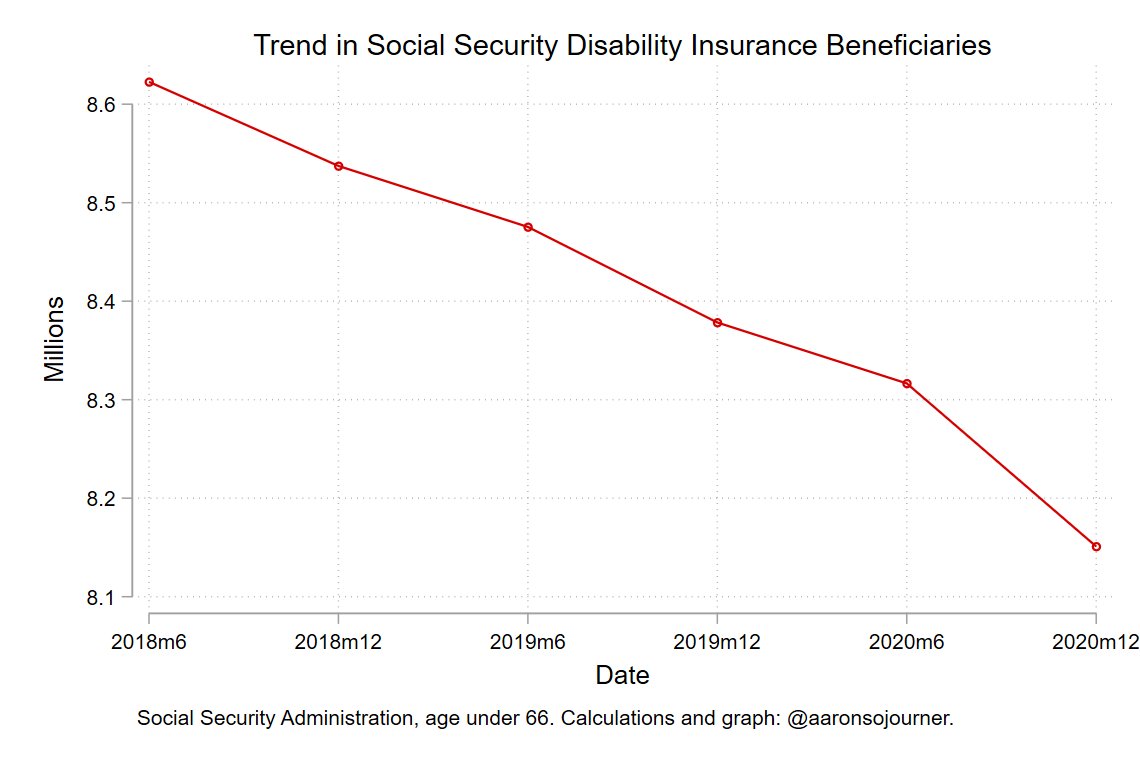Known: older Americans have exited the labor force in disproportionate numbers.
Unknown: how many will come back?
3.6 million more Americans are out of the labor force & not wanting a job now versus 2 years ago. Older Americans (55+) account for 90% of that increase.
Unknown: how many will come back?
3.6 million more Americans are out of the labor force & not wanting a job now versus 2 years ago. Older Americans (55+) account for 90% of that increase.

What's affecting decision to work vs not?
⬇️value of Work: COVID risks, ⬇️job quality, lack of nominal wage acceleration.
⬆️value of Not Work: helping (grand)kids w/care, any new non-labor income/wealth.
⬇️value of Work: COVID risks, ⬇️job quality, lack of nominal wage acceleration.
⬆️value of Not Work: helping (grand)kids w/care, any new non-labor income/wealth.

Over a million extra retirements occurred early in the pandemic, per @KansasCityFed research.
kansascityfed.org/research/econo…
kansascityfed.org/research/econo…

Will it stick?
Unretirements were suppressed during most of pandemic but are starting to climb towards pre-pandemic levels.
Unretirements were suppressed during most of pandemic but are starting to climb towards pre-pandemic levels.
https://twitter.com/nick_bunker/status/1460239997240553477
Permanently turning on retirement income is a high-stakes signal of intention to stay out.
Do we see a rise in Social Security early retirements or just turning in turning on of SS retirement benefits?
New analysis says no, tho I'm not expert in SS data. May be better cuts.
Do we see a rise in Social Security early retirements or just turning in turning on of SS retirement benefits?
New analysis says no, tho I'm not expert in SS data. May be better cuts.
SSA reports the number of people receiving only Social Security who are under age 65 every month. In October 2021, it was 5.741 million.
Lots of early retirees claiming their SS benefits would have pushed this up. Did that happen during pandemic?
ssa.gov/policy/docs/qu…
Lots of early retirees claiming their SS benefits would have pushed this up. Did that happen during pandemic?
ssa.gov/policy/docs/qu…

No, the general trend in the total number of SS beneficiaries under age 65 has been down for years.
2020 and 2021 seem to follow the pre-pandemic pattern.
No evidence that the pandemic caused a spike in early claiming of SS benefits.
2020 and 2021 seem to follow the pre-pandemic pattern.
No evidence that the pandemic caused a spike in early claiming of SS benefits.

Indexing each year's trend to January gives the same basic result.
Rose a smidge faster in early 2020 than 2019 or 2018 but ended each year on trend.
2021 is *falling* a bit faster than recent years, not rising faster.
Rose a smidge faster in early 2020 than 2019 or 2018 but ended each year on trend.
2021 is *falling* a bit faster than recent years, not rising faster.

Another cut at this comes from looking at trends in the number of Retired Workers claiming Social Security benefits by age group.
The most recent data is from Dec 2020. I pulled some past periods also.
Do we see any pandemic spikes there?
ssa.gov/oact/ProgData/…
The most recent data is from Dec 2020. I pulled some past periods also.
Do we see any pandemic spikes there?
ssa.gov/oact/ProgData/…

This looks at trends in numbers by age group, indexed to Dec 2019.
Age 70-84: continued prior path.
Age 62-69: accelerated over early part of pandemic, rising 2% to June 2020. To Dec 2020, fell back to abt 1% above pre-pandemic level.
Little evidence of trend breaks here.
Age 70-84: continued prior path.
Age 62-69: accelerated over early part of pandemic, rising 2% to June 2020. To Dec 2020, fell back to abt 1% above pre-pandemic level.
Little evidence of trend breaks here.

For a sense of magnitudes, this shows level differences from Dec 2019.
So the number of retirees aged 62-69 rose by only 139,000 over the year to Dec 2020.
So the number of retirees aged 62-69 rose by only 139,000 over the year to Dec 2020.

The claiming decision is high stakes bcz delaying your start date gets you a larger monthly benefit later.
If I understand all this, the evidence suggests no surge in older Americans taking the high-stakes step of turning on SS benefits, suggesting they may return to earning.
If I understand all this, the evidence suggests no surge in older Americans taking the high-stakes step of turning on SS benefits, suggesting they may return to earning.
No increase in Social Security Disability Insurance (SSDI) claiming either.
After age 65, SSDI beneficiaries are automatically shifted to SS retirement benefits.
After age 65, SSDI beneficiaries are automatically shifted to SS retirement benefits.

• • •
Missing some Tweet in this thread? You can try to
force a refresh










